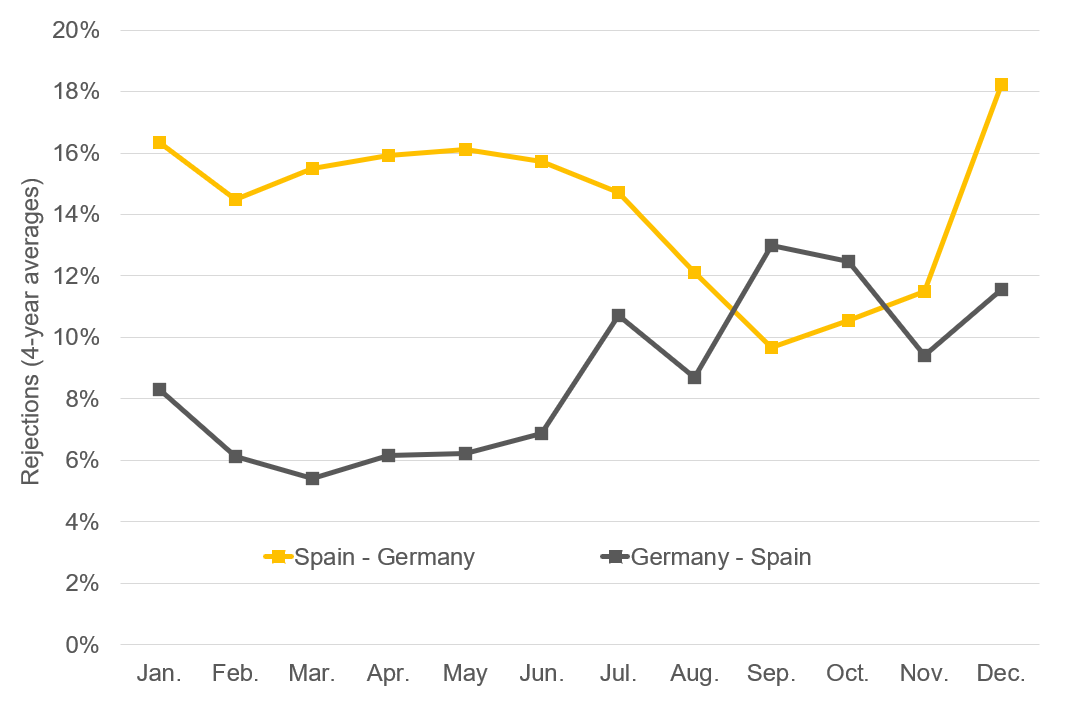Market Monday: Small Gallic villages defy the trend
Week 10 - Rejections, not all markets follow the overall trend
In the transportation industry, many people believe the market remains calm, especially during February and March, with no significant rejections or lack of available capacity until Easter.
In this week's episode of “Market Monday”, we focus on contracted load rejections particularly for transports between Spain and Germany. A transport is counted as rejected if the initial automatic assignment attempt times out, or if the contracted carrier actively rejects it. This obviously is not the usual process, and marks a situation where the contracted carrier struggles to provide the agreed-upon and necessary capacity.
The following analysis focuses on the structural situation of capacity and rejections between transports from Spain to Germany and vice versa. Therefore we calculated the average rejections for each month over the past 4 years per trade to identify fundamental market structures.
Contracted load rejections as a KPI for the available capacity in the market
Source: Transporeon Market Insights, own illustration
In this corridor, we notice two distinct trends throughout the year. The first half of the year sees high rejections for transports from Spain to Germany, while the second half, excluding December, sees lower rejections. This trend is reversed for transports from Germany to Spain.
The likely cause of this phenomenon is the seasonal effect associated with fruits and vegetables. During Germany's regional harvesting season, there's less demand for these products from Spain, resulting in fewer transports needed from Spain to Germany and thus fewer rejections in this direction. While on the other side transports from Germany to Spain are more constant and less influenced by seasonality. These transports see increased rejections as the imbalance between transports from Spain and Germany is reduced during this period.
Rejections also correlate with spot rates, meaning within periods with high rejections are often higher than average spot rates visible. This pattern is also confirmed in our additional analysis we did for both directions.
Multiple factors influence different markets, corridors, and directions at various times throughout the year. While clear seasonal trends are observable on a European level, specific markets may display completely different structural patterns.
Christian Dolderer
Lead Research Analyst





